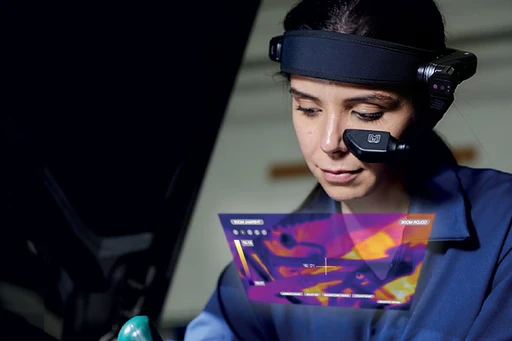PREVENTING POTENTIAL PROBLEMS WITH THERMAL IMAGING

Do you know that the industrial sector makes thousands of insurance claims every year just because of electric failures and subsequent fires? Faulty electrical equipment, loose wires, and poor wiring are the leading causes of industrial or manufacturing fires. A study revealed that 30 per cent of industrial fires are caused by electric failures. Further statistics reveal that 48 per cent of businesses fail immediately after making a claim, while 28 per cent fail within three years of making an insurance claim. It indicates a need for immediate action to detect malfunctions before they result in fires because, after all, prevention is better than cure.
Thermal image scans are a part of preventive programs as they assist in preventing these incidents and reducing the likelihood of fires caused by faulty electrical equipment. Thermal imaging is a non-invasive preventive tool that detects infrared radiation and converts it into visible images. Thermal cameras have significantly evolved since their emergence; they have become compact like digital cameras, making them convenient and easy to use.
The deployment of thermal imaging cameras is essential to detect problems and keep workplaces safe. A business must ensure its worker safety and well-being. Manufacturing facilities have higher voltage electrical systems, which require frequent yearly scans.
How do Thermal Imaging Cameras Work?
Also known as thermography, thermal imaging features an electrical thermal camera to detect heat emissions from an object. The data is utilized for image composition, even in low-light environments. Energy emissions are then converted into colour gradients that show variations in temperature with “one-tenth of a degree” accuracy.
What is Inside the Camera?
A thermal imaging camera comprises a thermal sensor, front and internal lens, processor and a display. These thermal cameras feature configurations from 80 x 60 to 1280 x 1024 pixels. These resolutions are comparatively lower than visible image cameras. The reason is that while regular camera sensors detect visible light, thermal sensors detect invisible infrared rays. These infrared rays are electromagnetic waves with larger wavelengths. A camera has a 1-2µm sensor, while a thermal camera has a 12-17µm sensor. With such a large size, it is nearly impossible to build a high-resolution thermal camera.
The Benefits of Thermal Imaging Cameras
Thermal cameras inspect electrical systems without any application limitations to high-voltage systems. If a business fails to scan electrical systems, heat rises, resulting in breakdowns and fire eruptions. Apart from electrical fires, load imbalances and corrosions also damage central electrical systems. Thermal scans can identify problem areas and determine a timeframe for equipment repairs.
Besides detecting electric failures and serving as a maintenance tool, it has more than one benefit, such as:
Reduced Equipment Downtime:
Thermal imaging scans are non-invasive; hence, they do not interrupt inspections, keeping productivity and profitability all in one place.
Increased Productivity:
Thermal cameras detect outages beforehand, allowing businesses to repair them before major breakdowns. It keeps productivity intact and allows workers to do work seamlessly.
Long-term Maintenance Program:
Thermal cameras serve as a long-term solution because they allow businesses to perform continuous maintenance. Frequent repairs keep businesses away from surprise outages and breakdowns, allowing them to plan proactively.
Be Proactive with RealWear Thermal Camera
Developed by Teledyne by FLIR, RealWear’s thermal camera is the world’s first voice-controlled device that allows workers to see the invisible. The device features a FLIR Lepton 3.5 thermal sensor, a 48 mega-pixel visible sensor and up to 1080-pixel video resolution. To know more about RealWear’s thermal camera module, hit us up with your queries, and our tech experts would love to assist.

